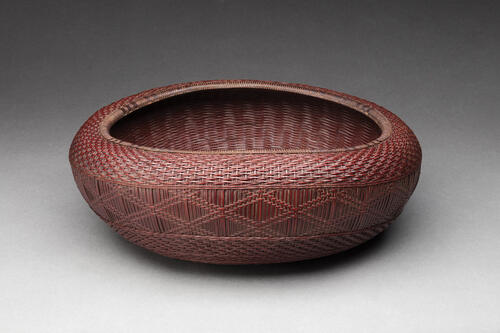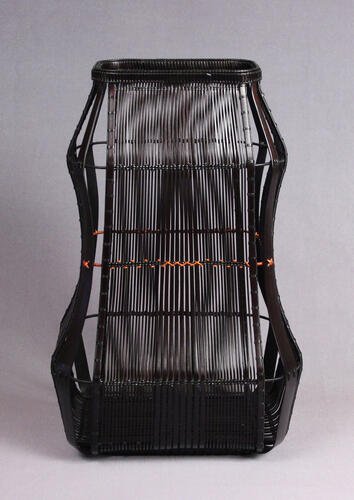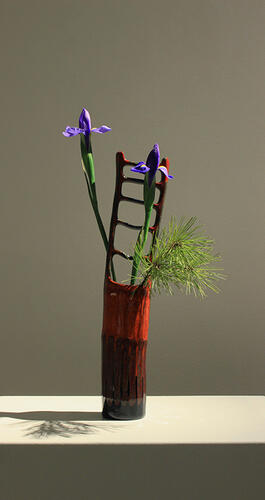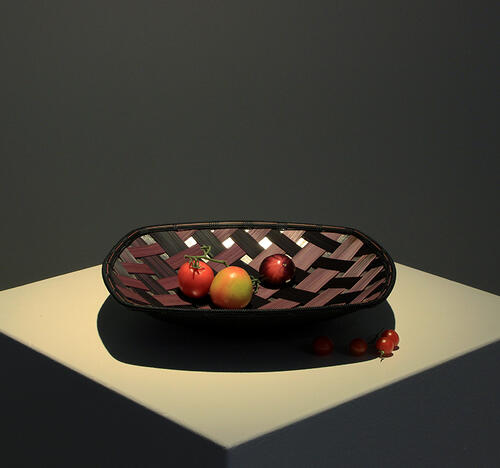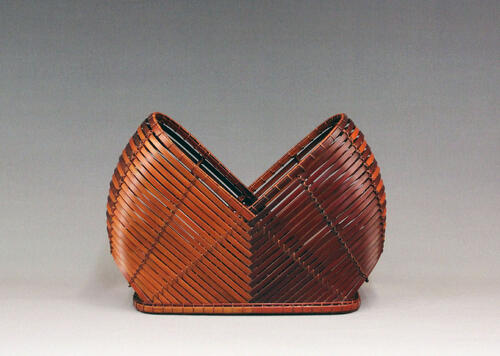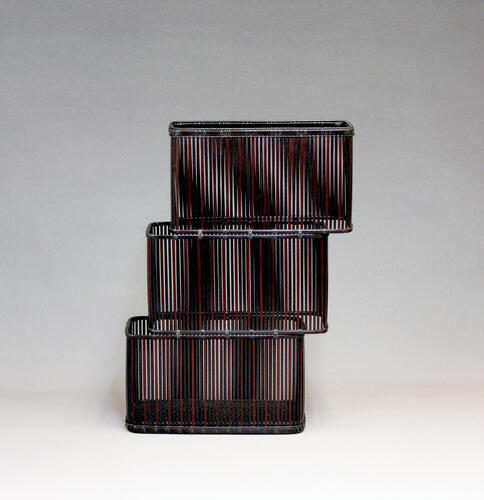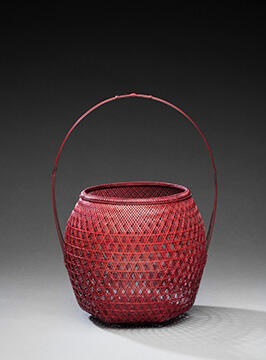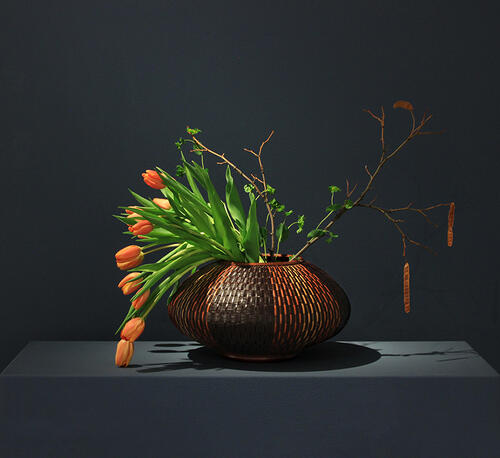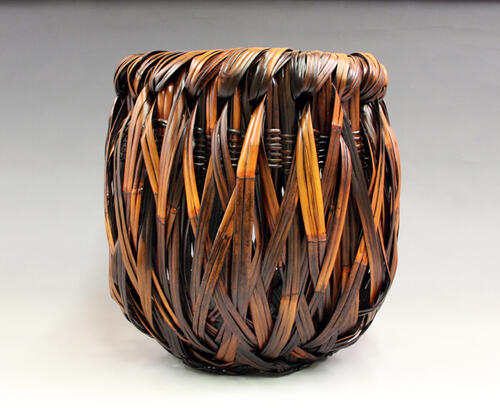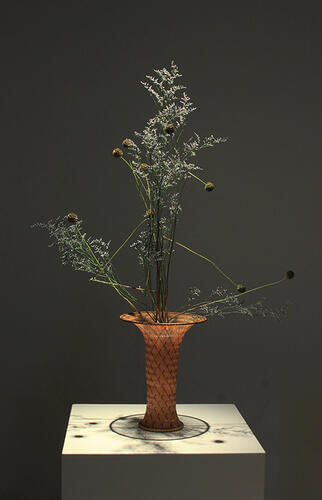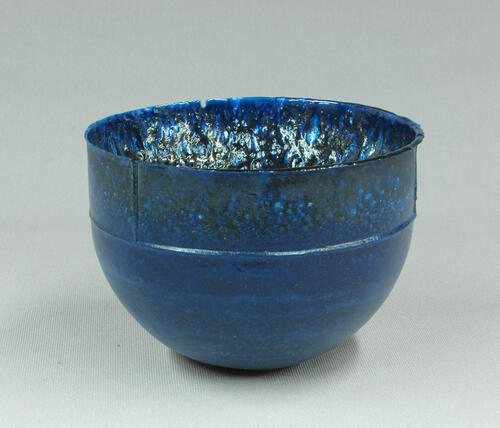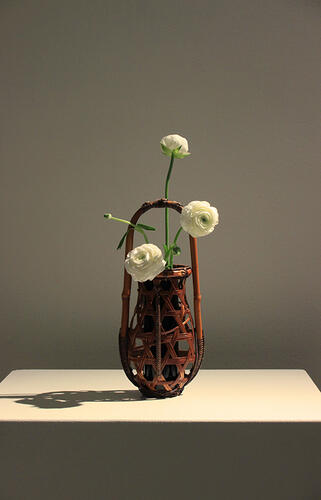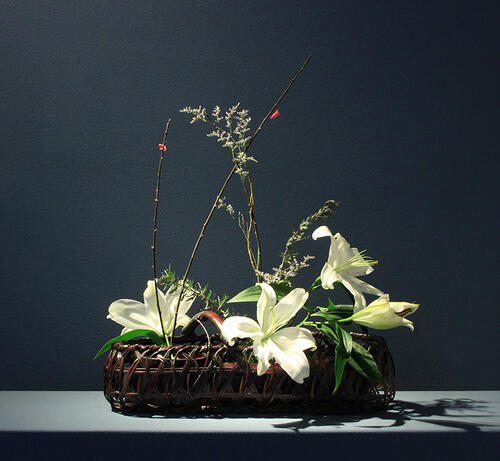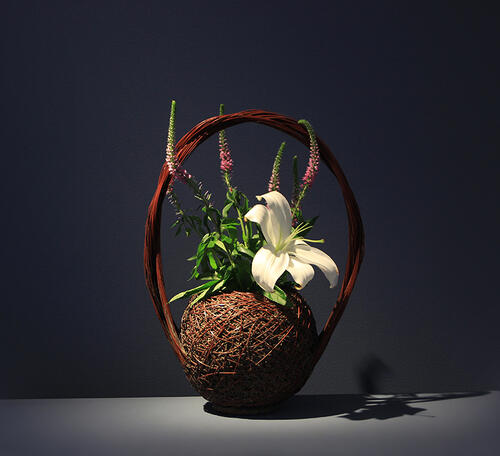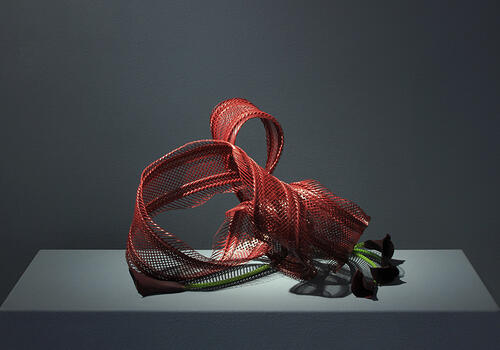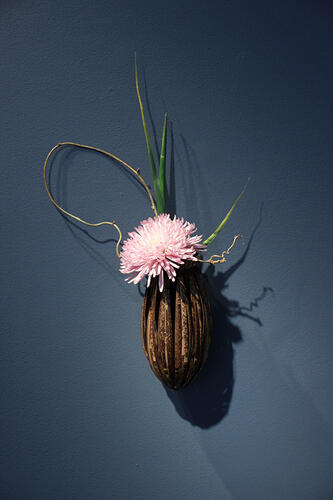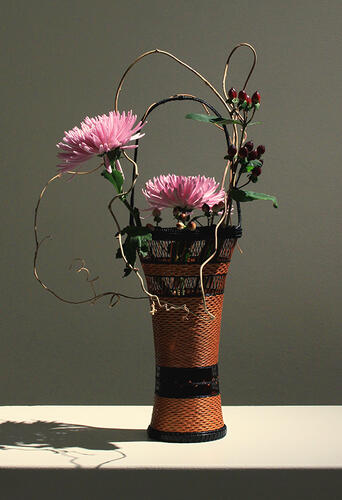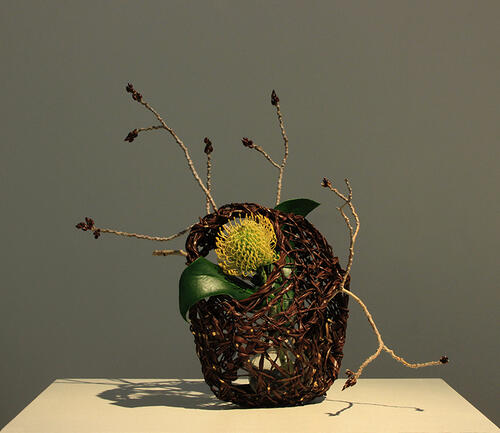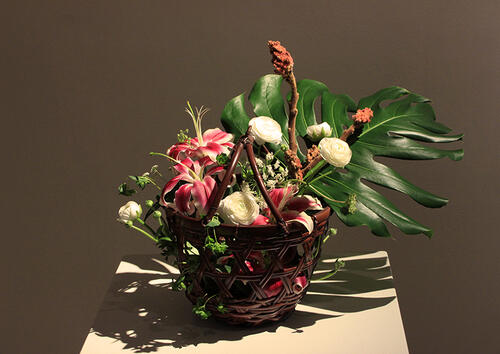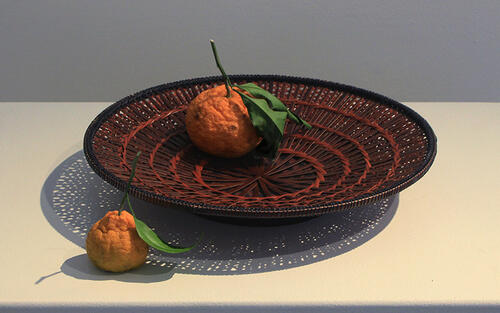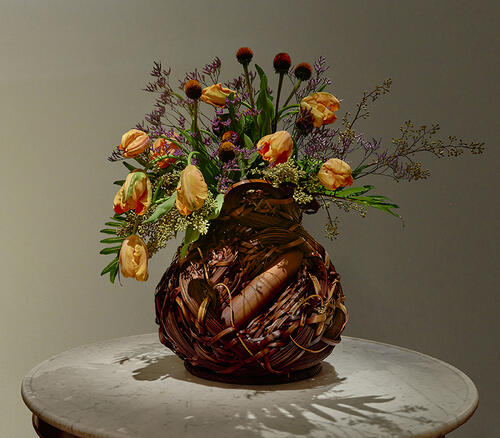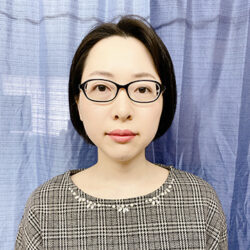
Ten Thousand Flowers
March 11, 2021–March 31, 2021
Ten Thousand Flowers pairs works of Japanese bamboo art with flowers in a nod to the longstanding relationship between the two.
“The works of bamboo art in our gallery do not need a flower arrangement to complete them” gallery director Margo Thoma explains. “I don’t want to trivialize or distract from a work of art by adding flowers. Nevertheless, pairing flowers with bamboo baskets still feels very special to me. It brings the historical roots of Japanese bamboo art to the forefront, and I have found that putting flowers in a basket redirects my attention from the actual form of the basket to the shape and potential of the negative space it creates. It is another way of learning about this multifaceted art form.”
The association between flowers and bamboo baskets began in the 6th century when it was customary to place offerings of flower petals in bamboo trays before an image of the Buddha. Over time, arrangements of stemmed flowers replaced the original offering of petals. Eventually, flower arrangements became more ornamental and relocated to living quarters, where they were featured as important design elements.
Early masters created baskets with the understanding that they would most often be displayed with flowers. Today, when a bamboo artist creates a flower basket, they do not necessarily expect that it will be used to hold flowers. However, the importance of functionality and relevance of ikebana is a matter of active debate, and each individual artist has a different stance.
Yufu Shohaku says, “To me, Japanese bamboo art must also have functionality. Beauty and functionality are the core of this art form.”
Says artist Ishoi Setsuko, “I create art for the purpose of visual appreciation. However, when I plan to make a work in the form of a flower basket, I think about how I would put flowers in this basket when the work is finished. When a single flower or when many flowers are placed in a basket, the work shows a different expression. Since flowers are alive, I feel that they change not only the atmosphere of the piece itself, but also the atmosphere of the place.”
- Ocean
- Luminous
- Lacquered Bamboo Cylinder
- Changing Color Morikago
- Meditation
- Stepping Up
- Waxing Moon
- Three Color Flower Basket
- Sunlight Streaming Through Trees
- Ten Thousand Flowers
- Structural Blue (15.6)
- Hexagonal Plaited Flower Vase with a Handle
- Jakago (Gabion-style Flower Basket)
- Fallen Pine Needle Basket
- Frill III-03
- Mugwort Basket (Cocoon)
- Pine Needle Pattern Flower Basket
- Twisted Basket
- Ryurikyo Style Flower Basket
- Early Spring
- Barbarian Sitting (Cross-legged)

